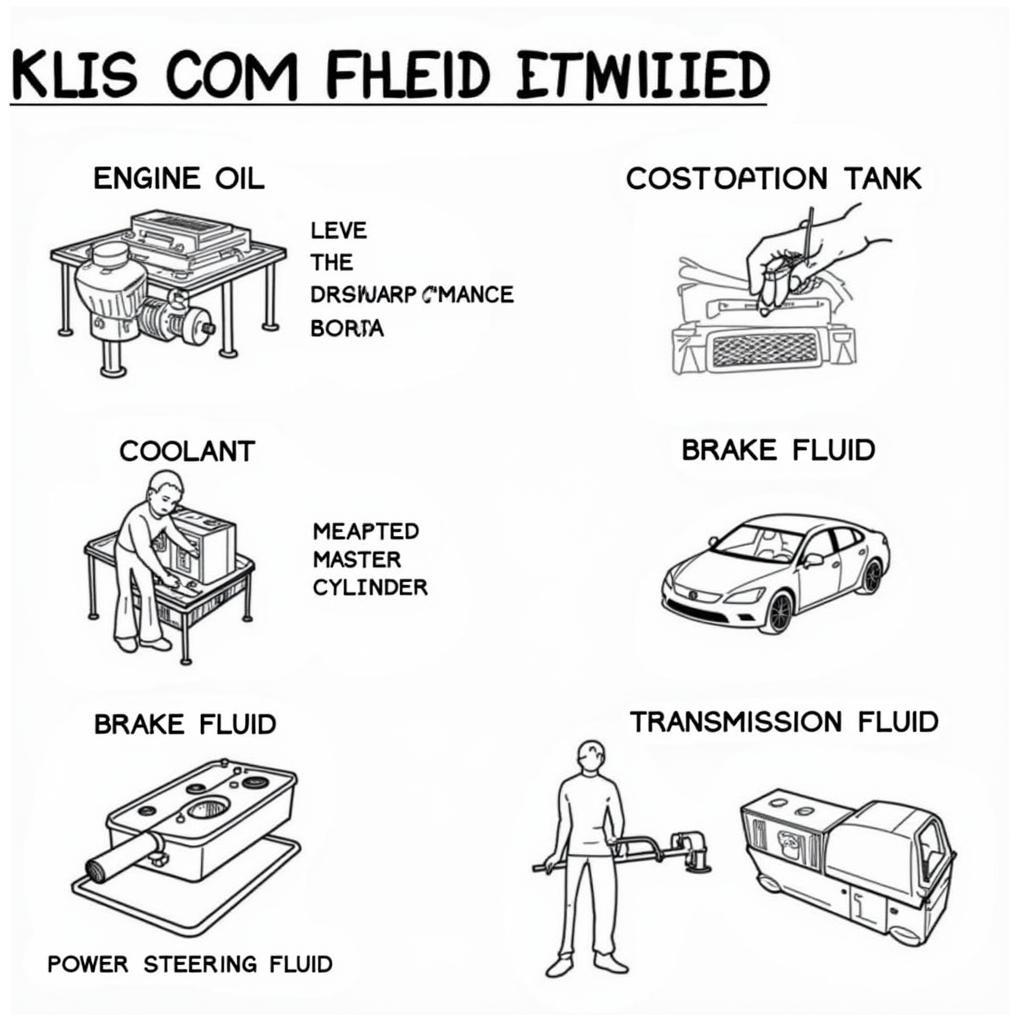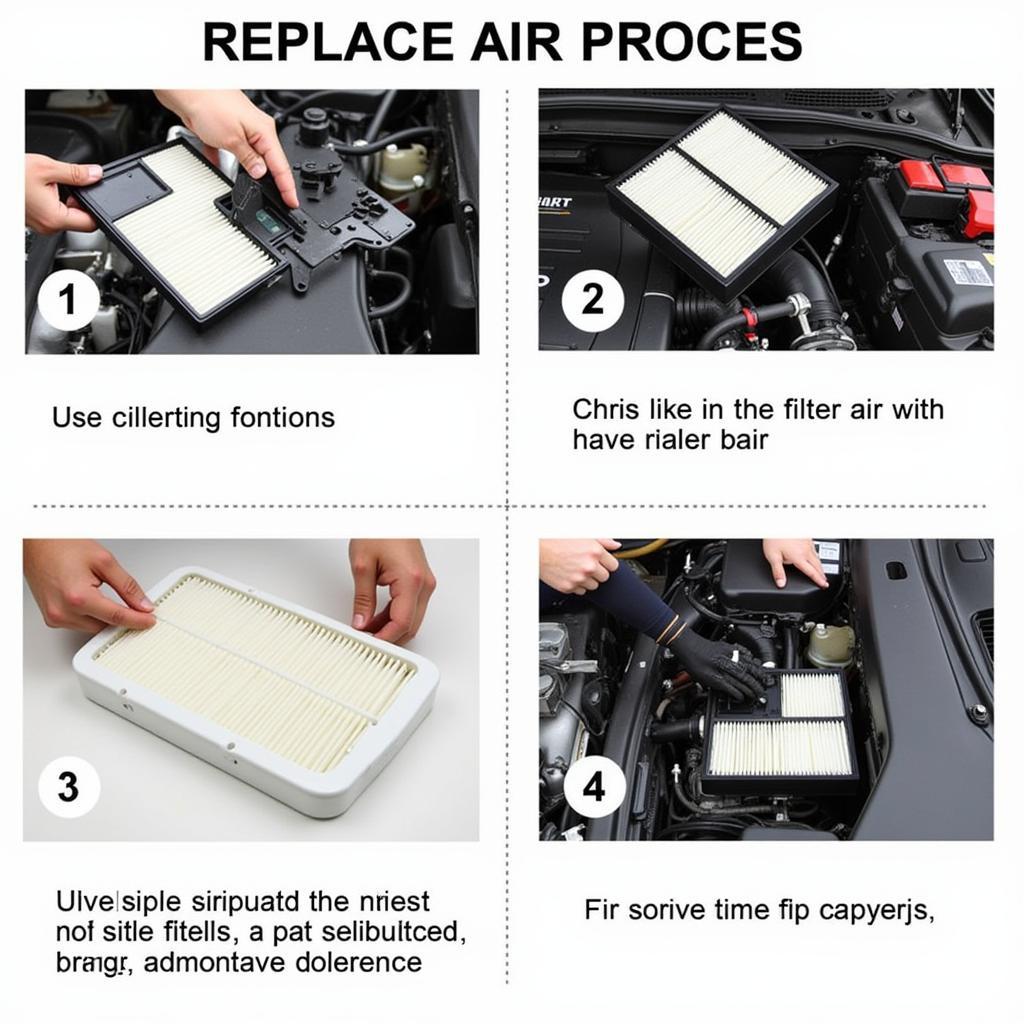Basic Car Maintenance Tasks are crucial for ensuring your vehicle’s longevity, reliability, and safety. Regular upkeep not only prevents costly repairs down the road but also contributes to better fuel efficiency and a smoother driving experience. This guide covers essential maintenance tasks that every car owner, mechanic, or technician should know.
Performing basic car maintenance doesn’t require advanced mechanical skills. Many tasks can be easily completed at home with simple tools and a little know-how. By understanding these fundamentals, you can save money, extend your car’s lifespan, and enjoy peace of mind knowing your vehicle is in top condition. This knowledge also helps you effectively communicate with mechanics and make informed decisions about repairs. Remember, proactive maintenance is always better than reactive repairs. Similar to easiest car maintenance, many of these tasks are straightforward.
Essential Fluid Checks and Changes
Regularly checking and changing fluids is the cornerstone of basic car maintenance. These fluids are vital to the proper functioning of various systems in your car.
Engine Oil
Engine oil lubricates the engine’s moving parts, reducing friction and heat. Check the oil level using the dipstick at least once a month. Change the oil and filter according to your car’s manufacturer recommendations, usually every 3,000 to 5,000 miles or as indicated in your owner’s manual.
Coolant
Coolant prevents the engine from overheating. Check the coolant level in the reservoir tank and ensure it’s between the minimum and maximum marks. Flush and replace the coolant according to your car’s maintenance schedule.
Brake Fluid
Brake fluid is essential for transmitting the force you apply to the brake pedal to the wheels, stopping the car. Check the brake fluid level in the master cylinder reservoir. If it’s low, there might be a leak. Have a mechanic inspect your brakes immediately. Brake fluid should be flushed and replaced every two years.
Power Steering Fluid
Power steering fluid assists in turning the steering wheel. Check the fluid level and top it off as needed. A whining noise while turning the steering wheel could indicate low power steering fluid.
Transmission Fluid
Transmission fluid lubricates the transmission and helps change gears smoothly. Check the transmission fluid level while the engine is running and warm. Changing the transmission fluid is typically recommended every 30,000 to 60,000 miles.
 Checking Car Fluids: Engine Oil, Coolant, Brake, Power Steering, and Transmission
Checking Car Fluids: Engine Oil, Coolant, Brake, Power Steering, and Transmission
Tire Maintenance: Pressure and Rotation
Maintaining proper tire pressure is crucial for safety, fuel efficiency, and tire longevity. Check your tire pressure regularly using a tire pressure gauge and inflate them to the recommended pressure listed in your owner’s manual or on the sticker inside the driver’s side doorjamb. Uneven tire wear can indicate the need for wheel alignment. Tire rotation is also important for even wear and tear. Rotate your tires every 5,000 to 7,500 miles. Just as with mazda car maintenance cost, keeping up with tire maintenance can save you money in the long run.
What’s the recommended tire pressure?
The recommended tire pressure is specific to your car model. It’s listed in your owner’s manual and often on a sticker inside the driver’s side doorjamb.
Air Filter and Cabin Air Filter Replacement
Air filters keep dirt and debris from entering the engine, while cabin air filters clean the air circulating inside the car. Replacing both filters regularly improves engine performance and air quality.
How often should I replace air filters?
Generally, air filters should be replaced every 12,000 to 15,000 miles, or more frequently in dusty environments. Cabin air filters should be replaced annually or as needed. If you’re looking for cheap maintenance sports cars, filter replacement is a key factor to consider.
 Replacing Car Air Filters: Engine and Cabin
Replacing Car Air Filters: Engine and Cabin
Battery Maintenance
Car batteries have a limited lifespan, typically three to five years. Inspect the battery terminals for corrosion and clean them with a wire brush and a baking soda solution. If your car struggles to start or the headlights appear dim, it might be time for a new battery.
How do I clean battery terminals?
Disconnect the battery cables, starting with the negative terminal. Clean the terminals and cable ends with a wire brush and a mixture of baking soda and water. Rinse with clean water and reconnect the cables, starting with the positive terminal.
Lights and Wipers
Regularly check all your lights, including headlights, taillights, brake lights, and turn signals. Replace any burned-out bulbs promptly. Wiper blades should be replaced every six to twelve months or as needed.
Belt Inspection
Inspect the serpentine belt and other belts for cracks, fraying, or excessive wear. A worn belt can break, leading to significant engine damage.
Regular Inspections: Why They Matter
Scheduling regular inspections by a qualified mechanic is crucial for identifying potential issues before they become major problems. This proactive approach can save you money and ensure your car remains safe and reliable on the road. This is especially important when considering cheap maintenance cars in usa.
“Consistent preventative maintenance is the key to avoiding costly repairs and extending the life of your vehicle,” says automotive expert, Michael Stevenson. “Taking the time for these simple tasks can make a world of difference.”
Conclusion
Basic car maintenance tasks are essential for every car owner. By following these guidelines, you can keep your vehicle running smoothly, safely, and efficiently for years to come. Regular maintenance saves you money in the long run and provides peace of mind. “Remember, a well-maintained car is a happy car,” adds Sarah Miller, a seasoned mechanic. Don’t hesitate to connect with AutoTipPro at +1 (641) 206-8880 or visit our office at 500 N St Mary’s St, San Antonio, TX 78205, United States for any assistance with your basic car maintenance needs.
As a final note, reviewing a mercedes car maintenance plan can give you a good idea of the type of schedule you should be following for your own vehicle, even if it’s not a Mercedes. Remember that preventative maintenance is always the best approach.




Leave a Reply